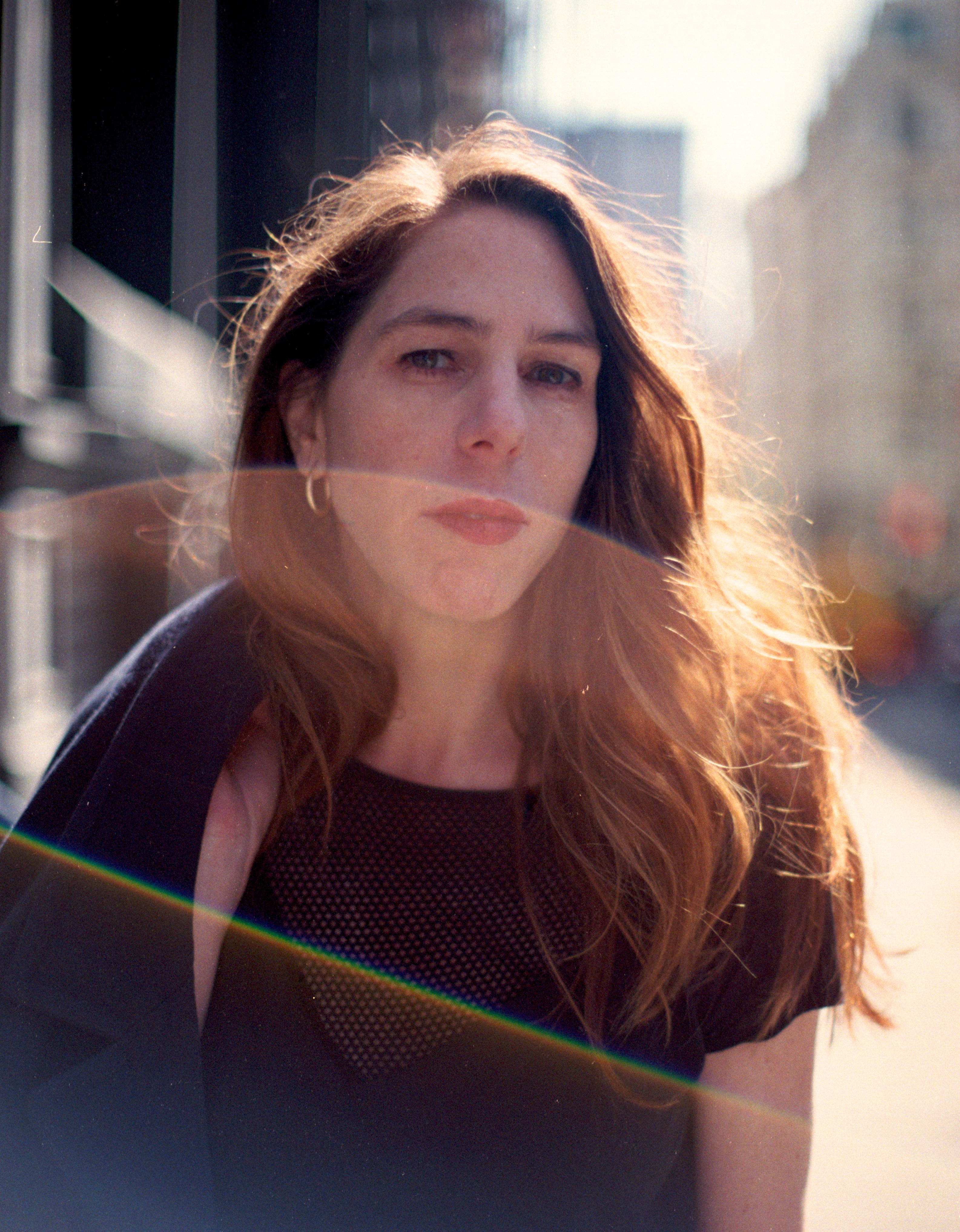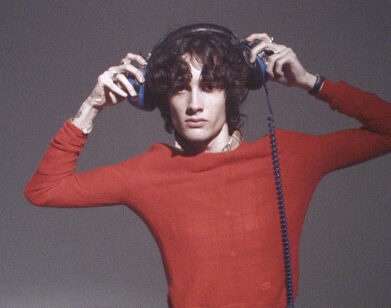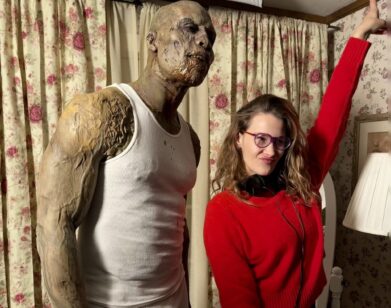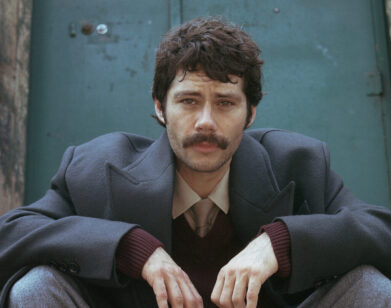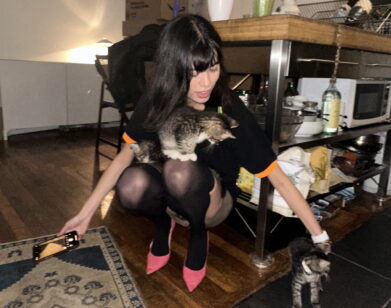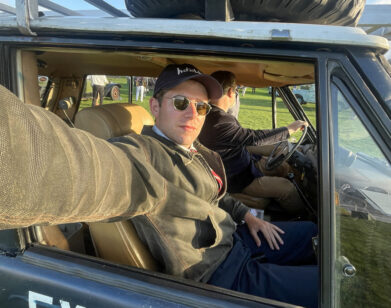Rachel Kushner’s Reno, L.A., and New York
PHOTOS BY FRANK SUN
A lot could have gone wrong in the making of Rachel Kushner’s second novel, The Flamethrowers. The author packs so many potent, disparate elements in between the covers—New York minimal and conceptual artists in the 1970s, leftish revolutionary Italian movements amassing in Rome in the summer of 1977, the evolution and speed-records of the motorcycle—that it is a testament to her mechanic-like storytelling ability to strap such a fast, graceful motor on so much sleek metal. Kushner has never been the kind of writer content with a single perspective. As with her brilliant first novel Telex from Cuba, The Flamethrowers shoots in all directions. Kushner has become a master of drawing times and places with the sense of unpredictable urgency—which is rare in fictional recreations of history. She is an artist of atmosphere; one who makes worlds, not rooms. The novel revolves around a young woman from Reno, Nevada, who comes to gritty downtown New York in the mid-’70s to become an artist. Obsessed with speed, as well as the range of artists she meets in Manhattan’s dark-but-fertile post-industrial days, “Reno” ends up in Italy unwittingly drawn into Red Brigade activity. One of the most impressive maneuvers of the book is its ability to depict the New York art world with legitimacy. So many writers have recently tried and failed to get the art world on the page, more often than not lampooning it into a three-ring circus that is about as entertaining as it is believable. Kushner, who has long written about art, knows how to supply veneration, extravagance, and humor in equal doses. Much of the novel takes place in SoHo, which is where we met over sushi while Kushner was in town from her home and family in Los Angeles.
CHRISTOPHER BOLLEN: You’re becoming a definitive L.A. writer. Are you comfortable being claimed as that?
RACHEL KUSHNER: I have? I guess I don’t mind it, but what does it mean? I love the novels of Didion and Bret Ellis, and consider them L.A. writers because they write about L.A. Which I have not done—although I might yet. Plus, I grew up in Eugene, Oregon and San Francisco, and always wanted to move to New York, and I eventually did. I went to grad school here.
BOLLEN: At Columbia. I saw a review of The Flamethrowers in the Columbia alumni magazine, which I got in the mail just yesterday.
KUSHNER: You read Columbia Magazine?
BOLLEN: Yes. At first I was like, “How did they find me, I’ve moved four times and I didn’t give them my address?” But I really have grown to like that magazine. It has good articles.
KUSHNER: I think maybe I’m too un-findable. After Columbia, I worked as an editor at Grand Street, and then at BOMB and was writing on the side, on occasion, for Artforum. Eventually I decided that if I was going to really write a novel, I couldn’t do it in New York City while holding down a job. You need a constant money source to live in New York City unless you’re independently wealthy, which I’m not. But, from writing about art, I had met some artists in L.A. They said, “Why don’t you try living out here?” So I traded apartments with the painter Delia Brown. That was in 2003. I loved it. I still love living there. The thing about it that attracted me at first was just this pure anonymity. I knew three people and I didn’t have to work a regular job, because I had savings and wrote freelance, and I constructed a very cheap life.
BOLLEN: Did you have a car?
KUSHNER: Yeah. Someone had given me one while they were gone on a television shoot for a year in Toronto. It was perfect.
BOLLEN: It’s amazing how life conspires to set you up with what you need.
KUSHNER: That’s sort of why I did it. I loved just writing all day and knowing that I would see somebody in ten days when I’d be invited to a dinner. L.A. is a great place to write because you have a lot of space. I have a big office at home, I can leave the doors open. Flowers bloom all year. But it’s unglamorous in all the right ways. My neighbors think I do nothing because I don’t go to a job, which is fine and good.
BOLLEN: I hate the sun for writing. It’s too bright and ruins my ability to concentrate.
KUSHNER: I am not a sun person at all. I think it’s a cancerous poison and I don’t want it touching me. [Bollen laughs] In the summertime there’s this sameness to the light that becomes really oppressive. The sky is this endless blue dome and it closes down so much possibility. But I have heavy curtains and also, a fortunate life, in that I don’t have to leave the house. I take my kid to school and then I go in my office, so I’m not outside during the times of day when it’s bright. And I don’t live in one of those modernist homes with glass walls. The movie Chinatown was filmed in our neighborhood, on our street.
BOLLEN: Did you find a writer community in L.A. or perhaps that was what you were escaping by leaving New York?
KUSHNER: Well, there is a kind of community of L.A. writers. And I do know them and I am friends with some, but my natural orientation has never been among a community of writers, really. For some reason my social world has always been in the art world.
BOLLEN: Which comes through in The Flamethrowers. To be honest I think most fiction writers don’t get the art world at all and when they try they always mess up its realities. One of the things I loved about your novel is that you do get it right.
KUSHNER: Oh, thanks. It’s unfortunately true that if you mess up a single detail of the art world the whole thing seems false, and most writers are not in a position to get the details right, because they don’t hang around with artists. It’s not something you can get the vague gist of. It’s too specific. One of the key moments for me was in the late-’90s, when I met the painter Alex Brown. We really hit it off, and he introduced me to his whole social world. The art world has changed a bit. At that time Feature Gallery was this really dynamic gallery. The gallerist Hudson was the center of something. A small, cool universe.
BOLLEN: I had some friends who showed there.
KUSHNER: Alex introduced me to the painters Alex Ross and Jason Fox, and Fox’s wife, the artist Huma Bhabha. Also Steve DiBenedetto and Michelle Segre, Jennifer Bolande and Cannon Hudson. They were mostly older than I was and they knew a lot. Not just about contemporary art and art history, but music and culture in general. I was the wallflower to some late nights in Jason and Huma’s insanely small apartment on Mulberry Street, listening to these very sophisticated conversations. I’d wander drunk to the bathroom, which was in the hall of the building, and had to deal with the weirdness of this married couple, a Pakistani woman and a guy who painted, like, a very smart version of acid rock psychedelia and loved Tom of Finland and had his work over the toilet. It was a world of nuance! And a social life that was wrapped around intellectual and aesthetic discourse, a shared one, and by participating in it I could learn so much. That’s how you get an education from people, socially.
BOLLEN: Your character “Reno” in The Flamethrowers is similar in that way. She listens and absorbs these older artists she meets in New York. I love the line in the book where you say that at a certain age just being around particular people is an event. Were you interested in the art world before you came to New York?
KUSHNER: I’ve always been interested in the art world. When I was a child I came to New York a lot to visit family. My aunt is a video artist. She knew quite a few big figures in the art world. My cousin Tovey worked for Richard Serra. So I was in SoHo in the late 1970s, riding around with my cousin in his truck. In the ’80s, as a teenager, my cousins would sneak me into the Horseshoe Bar and the Mars Bar and Save the Robots. Tovey made sets for the dance club Area. I went to Save the Robots when I was 14. Also Danceteria, Peppermint Lounge, and later the Palladium, where you would meet a lot of artists. I was a child but weirdly uninhibited. I talked to people and inserted myself in all kinds of absurd situations. I think some of those life experiences influenced me in terms of the main character of The Flamethrowers. But for the parts where the community of artists are speaking above her level of participation, that probably came more out of my experience of being in New York in the ’90s as an adult. But of course much or most of what happens when you write a character comes from something deeper in the unconscious. I’m not sure what forms it. I’ve never been an autobiographical writer. The experiences that I construct for her with those personalities are not drawn from my life. I built them. They’re kind of like fantasy composites of people I would want to spend an evening with. And they also become containers or secret parts of my own sensibility. Many people have identified me with the narrator, because she’s young and slightly naïve and impressionable. But that’s not exactly correct.
BOLLEN: There’s always that knee-jerk need to connect the writer’s life to the lives in the story. It’s back to the old idea of, if it’s a black writer one assumes the characters are also black. Or if it’s a white writer, everyone is white unless they are identified otherwise. So of course the mantel of Reno becomes Rachel Kushner in a secret form.
KUSHNER: It’s really a misconception to identify the writer with the main character, given that the author creates all the characters in the book. In certain ways, I’m every character. Then again, there is a huge gap between me as a person and what I do in the novel. I get to activate speech that isn’t my instinct—things that I wouldn’t necessarily say. But the dialogue is nonetheless me on some level, speaking my mind. I’ve been associated with Reno much more than the jaded or knowing or trickster-like characters in the book, but I’ve created all of them.
BOLLEN: What was the impetus for writing about the art world in the 1970s and the social movements in Italy at the same time? Art and politics even then don’t necessarily merge as some shared revolutionary dynamic.
KUSHNER: The fundamental challenge of this novel was to put these divergent things in play, in circulation around each other, and hopefully not tie them together in an overly schematic manner. But I felt instinctively that they were related. Or rather, that meaning would reveal itself by laying them side by side and teasing out their resonances. I’ve always been interested in a very specific period of art—downtown New York in the early and mid-’70s. Maybe it’s a cliché to some degree, but it’s true that people were able to move to New York with no money, into these huge spaces in SoHo, and make things happen. There are all of these interesting figures, especially among the women, like Yvonne Rainer, Hannah Wilke… so many.
BOLLEN: Paula Cooper…
KUSHNER: Yes, Paula Cooper. Virginia Dwan. A little later, Pat Hearn. Critics Lucy Lippard and Barbara Rose. All of these strong women who were essential to the art world of the time, which to me was producing particularly great work in the early and mid-’70s. Gordon Matta-Clark had a retrospective at the Whitney just when I began thinking this novel.
BOLLEN: I love Gordon Matta-Clark’s work. And I’ve really only come to appreciate it in the last few years, which has been a kind of delayed treat. In a way, I’m grateful it eluded me for so long.
KUSHNER: I was working at Bomb Magazine and my boss, Betsy Sussler, had done the beautiful film footage of his piece Day’s End where he cut a lunette into the wall of a Chelsea pier. Which is also where everybody had their trysts so that piece, to me, also speaks of this wonderful, innocent time when there was this underground gay culture on the West side. My aunt had been friends with Gordon Matta-Clark. I was also thinking about the Pictures Generation, and while I was working on this novel, that work had re-surfaced as a major influence in the art world. There was the retrospective at the Met. There’s this really great book about Jack Goldstein and his peers—David Salle, Jim Welling, Matt Mullican, etc, called Jack Goldstein and the CalArts Mafia. I read that and was entranced. There are all kinds of reasons why that time interests me.
BOLLEN: And of course New York City in the ’70s itself is a fascinating place.
KUSHNER: Right. The urban blight. From Midnight Cowboy to Taxi Driver is a brief era whose grit, beauty, and violence, has been quite mythologized. The economy of the city had bottomed out. It’s the death of the industrial age in the United States, which is kind of perfectly symbolized in the fact that the artists in that time were moving into former manufacturing spaces, as well as using the detritus of industry to make their work—stuff they found on the sidewalk in SoHo as these buildings were repurposed. Robert Morris made all of these pieces out of scrap rubber, and Richard Serra did similar kinds of work at that time. I get a charge out of trying to connect the dots between things—not in a paranoid and conspiratorial way, but in a sort of social history and political economy way. I was thinking about industry, America, and urban culture in the ’70s. And one of the hallmark images of that time is the blackout in the summer of ’77. I was thinking about that and I was looking at photographs of that night, and it occurred to me that it would be an interesting contrast to what happened in Italy in 1977. There was a march in Rome on March 12 of that year, where 100,000 people poured into the streets and there was a kind of mass illegality among divergent people congregating to protest because a student had been killed a day prior in Bologna. So I was thinking about the image of the crowd in this day in Rome and the crowd during the blackout in New York, and I guess I kind of started from there.
BOLLEN: So you didn’t feel a need to unite the art world with a protest movement?
KUSHNER: No. A distance between two worlds, for me, is useful, and also appropriate. I wasn’t going to try to overtly tie them together. The novel is a big space, and a lot can happen. Just think about the parts of your life. How do we account for our own contradictions? The only way to understand them is to let them exist, as truths that indicate something about character. People are built of elements that don’t fit together—and the conflict of that is their essential drive, probably! The space of the mind is much like the space of a novel. And with a novel, there is the luxury of time, its elapse. I start in 1917, during World War I. It’s a very brief scene, but for me it’s essential. I open with a kind of Futurism-in-action, with the mystification of violence and a fascination with the machine age. Then we move to the girl, speeding along.
BOLLEN: I’m curious why you decided not to give the main character a name. She’s known intermittently as “Reno.” But was there a larger goal in mind by leaving her vague in this way? Throughout the book there are images of women that go unnamed or that are used, like the “China Girl” to test the color of projection film, as supplementary objects for larger purposes.
KUSHNER: I suppose I am interested in women plus anonymity plus disappearance. I think the choice not to name her stemmed originally from the way I keyed the tone of the narration. She is a first-person narrator who’s not telling a lot about herself. She is having an immersive experience, of world after world that is new and curious and foreign to her. I wanted the reading experience to be very closely bounded to her perceptions of the outside world. I don’t think any of us experience ourselves subjectively insofar as we think of ourselves as being named.
BOLLEN: What about the role of speed in the book. There is a Paul Virilio-esque sense of the glorification and boundary-breaking substance of speed and the mechanics of the motorcycle. What’s your history with motorcycles?
KUSHNER: I’ve always been interested in bikes and machines and vintage cars and car racing. For some reason. I was that kind of kid. My dad had a rare British motorcycle when I was growing up, a 1955 Vincent Black Shadow, which is kind of an epic symbol of speed in the 20th century because in its time, it was the fastest motorcycle ever built. We used to go to vintage rallies and weekend races. It’s a beautiful motorcycle. It’s incredibly fast. It has a thousand cc motor. He had bought it in England and had shipped it over. I think the presence of the Vincent probably started it for me, but you never know. We used to go to the racetrack to see drag races. And I loved the Land Speed racer Craig Breedlove. I thought he was really cool and heroic. We would pass through the Bonneville Salt Flats because my parents were ski bums and we would drive from Oregon to Utah. That’s where they do the world land speed so there’s a huge history to it and it’s a magnificent place. We used to stop there and get postcards at the gas station of Craig Breedlove with his Spirit of America. So for me, there’s just some original kind of inspiration in that imaginary.
BOLLEN: So your dad taught you how to ride a motorcycle?
KUSHNER: No! I was forbidden from riding motorcycles. I learned just after I graduated from college and was on my own. I bought a Moto Guzzi V-50, which is a really special bike, at least I find them so. From there, I grafted into a whole vintage Italian and British motorcycle scene. Which was when I finally got to ride my dad’s Vincent. It’s something to ride. It turns a lot of heads. But it’s not exactly easy to get started and keep running. I’ve always had a lot of respect for people who are brilliant mechanics.
BOLLEN: There’s also an autonomy that happens with a motorcycle that you just don’t get from a car. You’re straddling the motor. It isn’t in another room.
KUSHNER: Yes, all true. I did this crazy road race called the Cabo 1,000 where you span the length of the Baja Peninsula in one day. It’s about 1160 miles. You start in San Ysidro, which is under San Diego at the Tijuana border. You do it on a full moon night. It no longer exists. It was illegal. People got killed and they stopped doing the race.
BOLLEN: Why did you pick Reno as the main character’s hometown?
KUSHNER: I find the town of Reno interesting for some reason. It’s a gambling town, but it’s not Las Vegas. It’s so close to the Sierras that it was a mountain culture, but a Western one, too. I have passed through it a lot as a skier. When I ski raced in college at the University of Nevada, Reno ski team was in our league, so we raced against them. They were a cut above. These tough kids who were great skiers and working class, which is not a combination you often find. I thought I would get a chance to go there and stay in a motel and walk around the town while I was writing this novel, but it didn’t happen. That only trip I took was to the Salt Flats for Speed Week, and after that I drove up and looked at the Spiral Jetty.
BOLLEN: I’ve always wanted to see the Spiral Jetty. Have you ever gone to Marfa?
KUSHNER: I’ve been twice. Maybe one of the antecedents for wanting to write about SoHo at that time is that my best friend’s mom worked for Donald Judd, and I would visit them in New York. In 1980 I stayed with them on Mulberry Street, which keeps coming up, it’s a primal scene of a street for me. But not any longer: it’s unrecognizable now. When Judd died, he left her a house in Marfa, and she lives there, so I’ve gone to visit her a couple times.
BOLLEN: Reno captures the record for fastest land speed for a woman. Is there such a record?
KUSHNER: There is. In 1960s, two land speed racers, Craig Breedlove and Art Arfons from Ohio, were trading world records back and forth. In 1965, Breedlove set a record and wanted to hold it for the year, but Art Arfons and his team were heading to the Salt Flats to set their own record. There was some kind of stunt where Breedlove convinced his wife to drive the vehicle in order to keep the salt reserved and shut Arfons out, because the season was ending—in the winter it rains on the salt flats and they flood like a shallow bowl. That’s what I borrowed for my book. Her name was Lee Breedlove. There’s a photo of her posing next to the Spirit of America and she is this busty, gorgeous woman with cat-eye makeup. If you didn’t know better you’d be sure it was a publicity still for a Russ Meyer film. She’s next to the back of the vehicle, which has this huge, open jet exhaust that looks like a Lee Bontecou sculpture. I thought about the ’60s and NASA and speed and women; somehow it all came together for me with that image.
BOLLEN: I wonder what happened to Lee Breedlove.
KUSHNER: I think she lives in Riverside, California. She wasn’t married to Craig Breedlove for very long. I looked her up. She had married a fabricator who worked on Indy racecars and then was murdered or something. I don’t know. Google is so weird, what can and can’t be understood about what happens to people. Some rise up, are larger than life, and then there’s no trace, or just a sordid trace on a list-serve.
BOLLEN: You should send Lee Breedlove a copy of the book.
KUSHNER: That’s a good idea. I should. But it might be another novel just tracking down her mailing address.
THE FLAMETHROWERS: A NOVEL IS OUT NOW.

